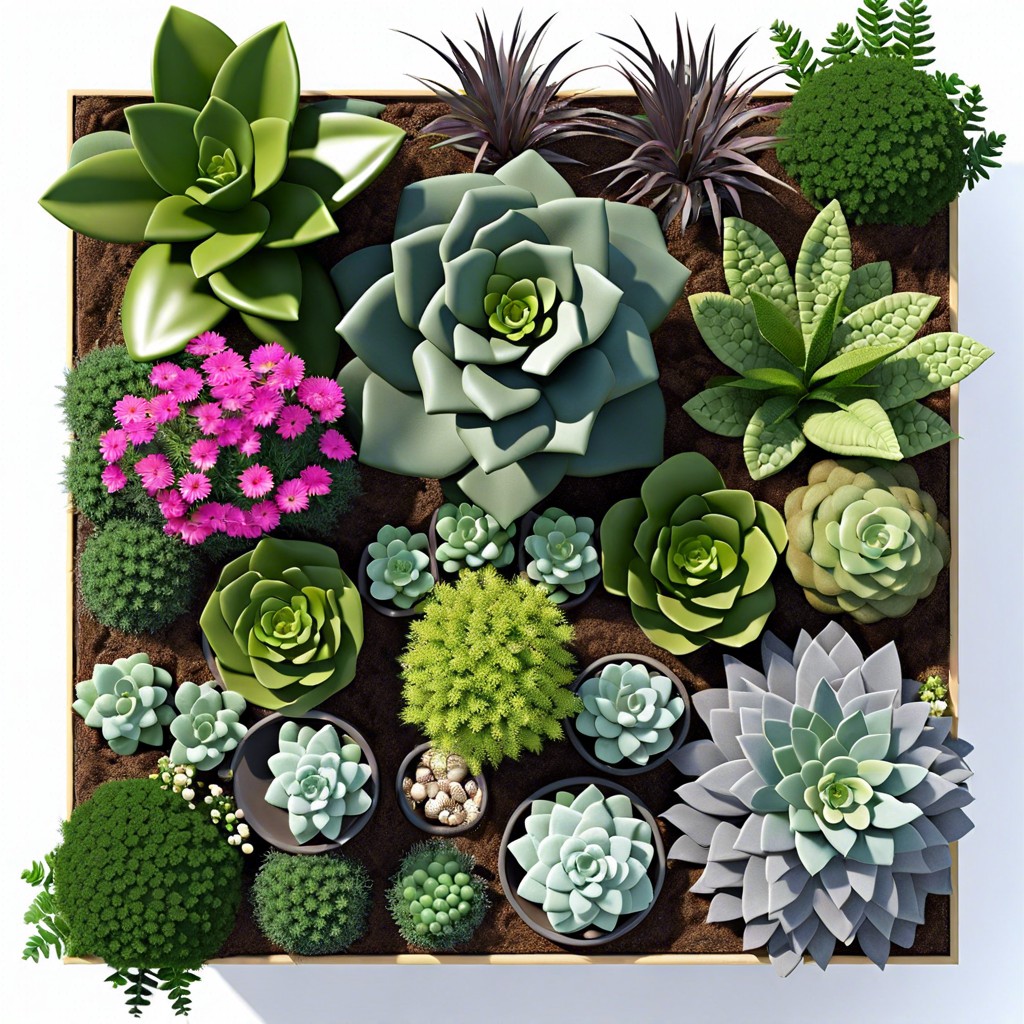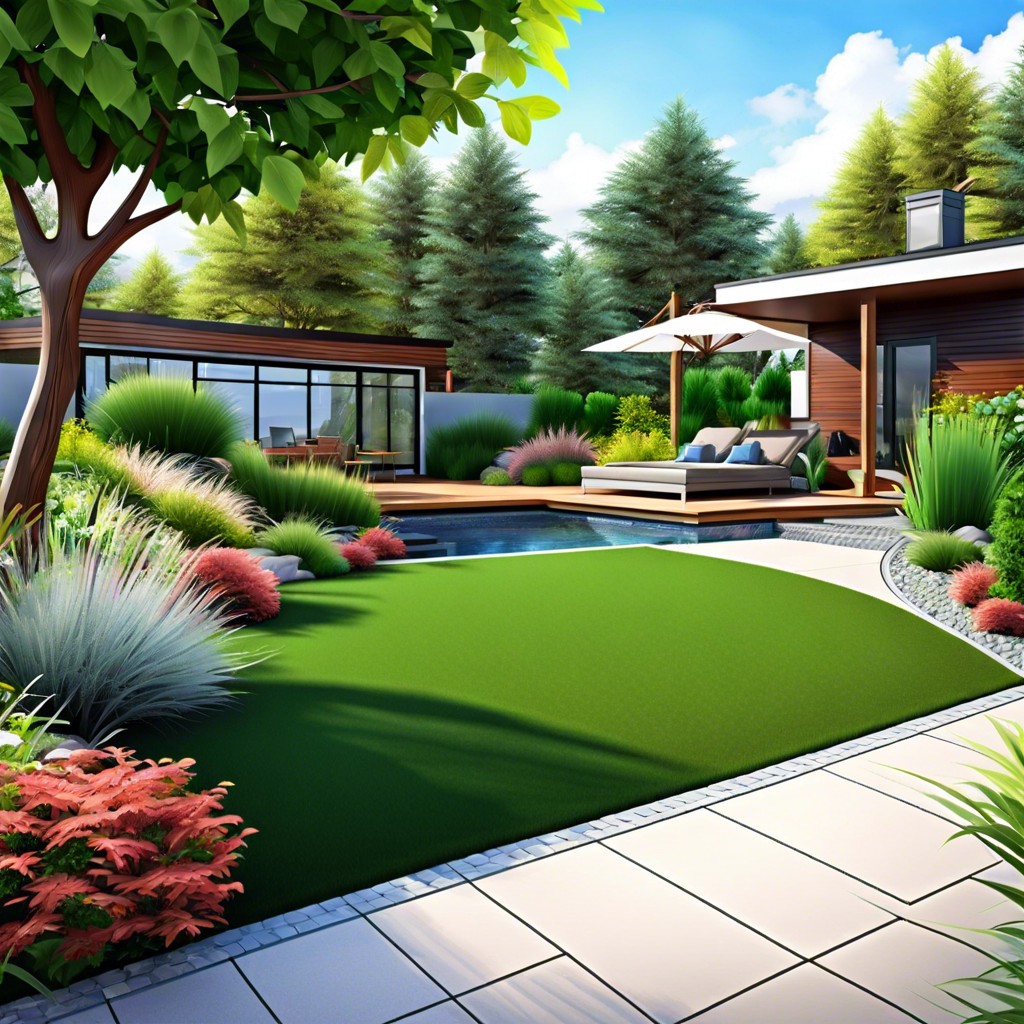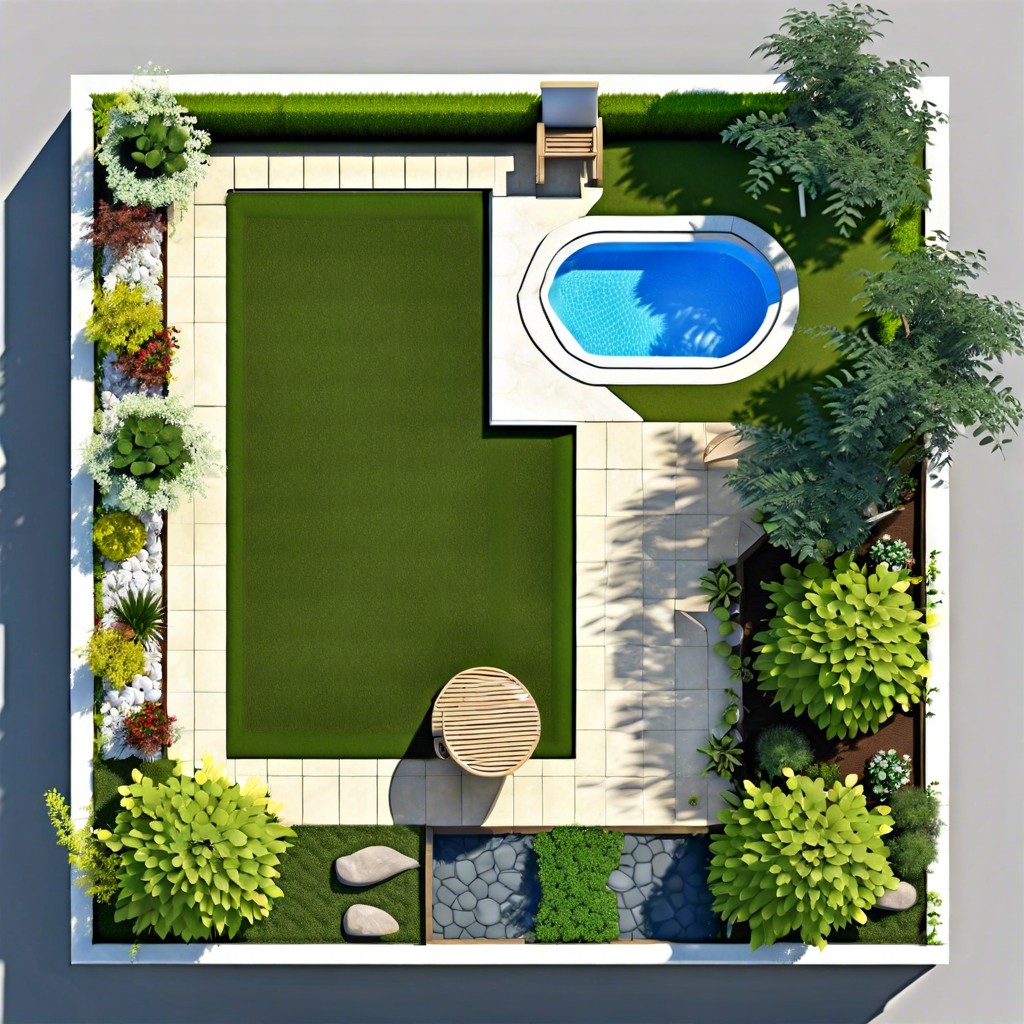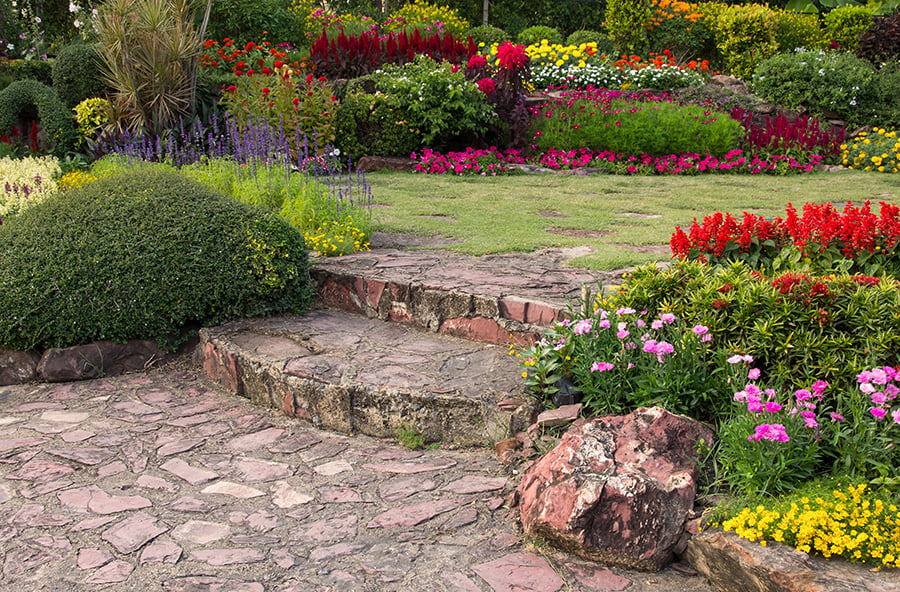In this article, you will learn about the functionality and benefits of using a landscape design app to create your ideal outdoor space effortlessly.
Key takeaways:
- Landscape design apps enable visualization and planning of outdoor spaces.
- Look for user-friendly interfaces, comprehensive plant libraries, and customization options.
- Popular landscape design apps include Home Outside, iScape, PRO Landscape Home, Garden Planner, and VizTerra.
- Consider app privacy and data protection before choosing.
- Choose an app based on your expertise, project scope, budget, device compatibility, and additional features.
Understanding Landscape Design Apps
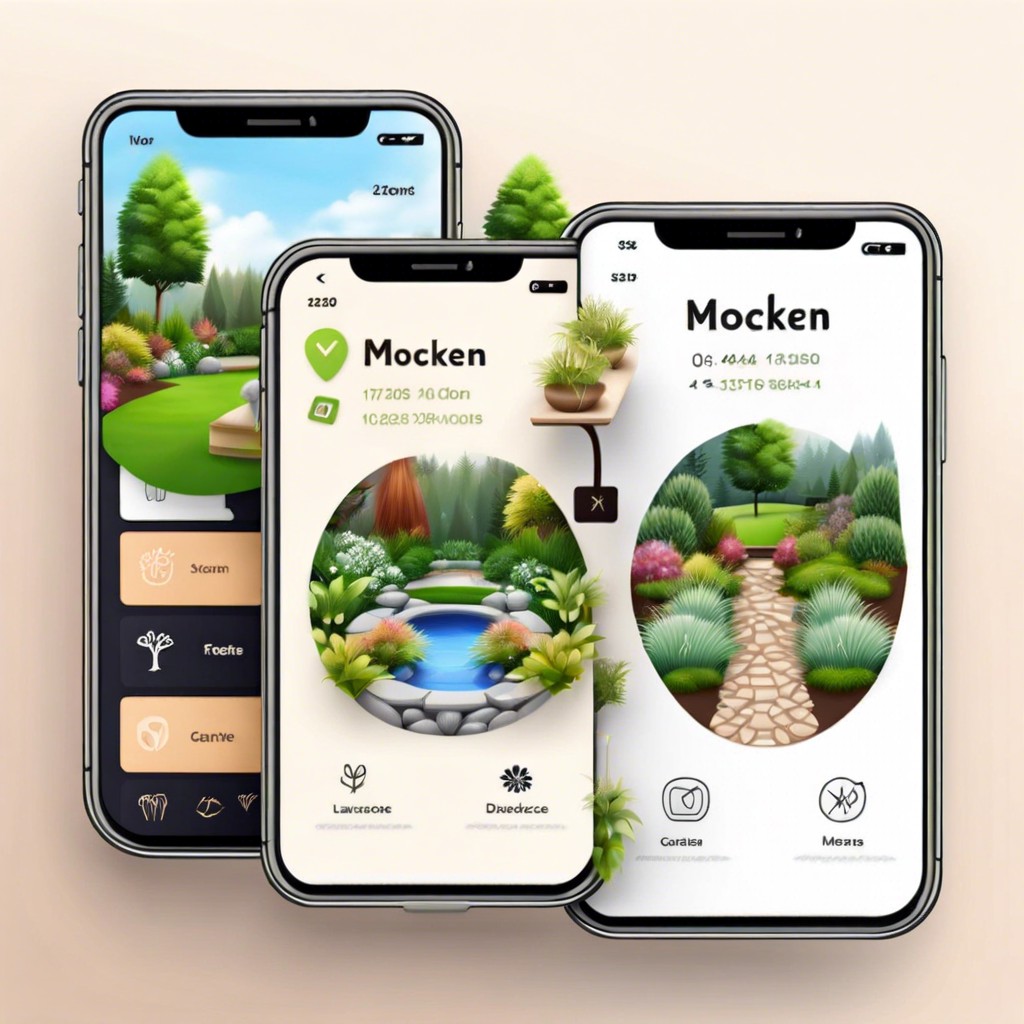
Landscape design apps are digital tools that enable both professionals and hobbyists to visualize and plan outdoor spaces before any physical work begins. These apps can range from simple interfaces for sketching out garden layouts to complex programs offering 3D modeling, augmented reality, and extensive plant libraries.
The basic idea behind these apps is to provide a platform where users can experiment with different design elements including plants, hardscapes, water features, and accessories. By doing so, you can see potential results and make informed decisions on the aesthetics and functionality of your outdoor space.
What’s more, these apps often include features that allow you to consider factors such as sunlight exposure, topography, and seasonal changes. This helps in creating sustainable designs that maintain their appeal year-round.
The convenience of a landscape design app lies in its ability to save time and resources. It reduces the need for physical samples and numerous redesigns which can be costly. Digital designs can be easily altered, enabling a fluid creative process that adapts as your vision evolves.
Lastly, for professionals, these apps can facilitate client communication. By sharing visual representations of design proposals, clients are better equipped to offer feedback, ensuring the final landscape meets their expectations.
Key Features to Look for in a Landscape Design App
When browsing the options for a landscape design app, several key features stand out as essential for a smooth and productive design experience.
First, a user-friendly interface is crucial. You want to spend your time crafting your outdoor space, not wrestling with complicated controls. Look for apps with intuitive navigation and clear instructions, which will make it easier to bring your ideas to life even if you’re not a tech whiz.
Secondly, a comprehensive library of plants, hardscape materials, and accessories helps you visualize and plan your garden with accuracy. A good app provides a broad selection of items with detailed information on growth habits, maintenance, and suitability to different climates.
Thirdly, the ability to visualize designs in 3D or augmented reality (AR) can be a game changer. This technology lets you immerse yourself within your created landscape, offering a more realistic view of the potential outcome.
Customization options are also important. The more you can customize your design — from terrain to the color of the flora — the more personalized and satisfying your final design will be.
Scalability should not be overlooked. Whether you’re planning a small garden or a sprawling estate, the app should accommodate projects of various sizes.
Lastly, sharing capabilities allow for easy collaboration with family members, friends, or professional landscapers. Feedback is essential, and the ability to share your evolving design can streamline the process substantially.
Remember, the best app is one that complements your creativity and makes the design process an enjoyable journey.
Popular Landscape Design Apps On the Market
Navigating the plethora of landscape design applications can be daunting. Among the many options available, a few have risen in popularity due to their user-friendly interfaces, robust feature sets, and positive user feedback.
First is Home Outside, a widely favored app that allows both professionals and DIY enthusiasts to lay out gardens, create palettes, and even play with different materials and textures. Its simplicity is perfect for those who are new to landscape design.
iScape app, another top contender, caters to both iOS and Android users. With an extensive library of plants, it provides augmented reality (AR) features that let you visualize the design superimposed on your actual space, making it a powerful tool for decision-making and client presentations.
PRO Landscape Home is aimed at homeowners looking to quickly sketch out design ideas without needing a deep knowledge of landscaping. It offers a photo imaging feature that helps visualize changes before any real-world work begins.
Garden Planner is well-suited for users who prefer working on a desktop. It boasts an extensive library of objects and plants, along with useful drawing tools that help in planning out a detailed and scaled landscape.
For those seeking a more comprehensive tool, the professional-grade VizTerra offers a suite of detailed design tools along with 3D rendering capabilities. Although it has a steeper learning curve, the results are photorealistic simulations of proposed landscaping projects.
While these apps each have special features, it’s important to consider your specific landscaping needs, skill level, and the seriousness of the project before choosing the right one for you. Each offers a unique way to bring your garden or outdoor space from concept to visual plan, accommodating various levels of complexity in landscape design.
Understanding App Privacy in Landscape Design Apps
When you’re selecting a landscape design app, it’s important to consider the privacy implications. These apps often require access to personal data such as location, photo library, or even personal contacts. Understanding how this information is used, stored, and protected shouldn’t be overlooked.
Take note of the permissions asked by the app during installation. Does it need access to your camera or GPS location? Are these functionalities essential for the app’s operation, or can you use the app without granting all permissions?
Check the privacy policy. This document should clarify what data is collected, how it is used, and if it’s shared with third parties. It’s not just about the immediate functionality—it’s also about how your data might be used in the future.
Data encryption is another key aspect. Your data should be encrypted both in transit and at rest. This prevents unauthorized access and ensures that even if data is intercepted, it can’t be easily read.
Lastly, consider the app’s reputation. Reviews and ratings can provide insight into other users’ experiences with privacy. If an app has a history of data breaches or privacy issues, it might be best to look for a more secure alternative.
Choosing the Right App for Different User Needs
When selecting a landscape design app, consider your level of expertise. Novice gardeners may benefit from user-friendly interfaces with drag-and-drop features, while professionals might prefer apps offering detailed customization and CAD compatibility.
Reflect on your project scope. Casual projects like home gardens require basic apps with simple tools. Large scale designs, however, necessitate advanced options such as topography mapping and zone-specific advice.
Budget is crucial; apps range from free versions with in-app purchases to costly professional-grade software. Determine whether the app’s value aligns with its cost, given your specific needs.
Device compatibility is also essential. Some apps are designed exclusively for tablets to take advantage of a larger display, which is beneficial for intricate designs. Ensure the app you choose works seamlessly on your preferred device.
Lastly, consider the app’s additional features, like access to a plant library or augmented reality (AR) capabilities. These can greatly enhance your planning and visualization experiences.
Think about these points carefully to find an app that aligns with your specific landscape design requirements.
Also interesting:
